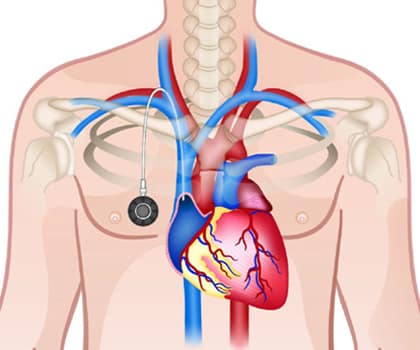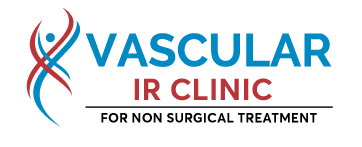Chemoport Insertion with a Proper Medication
An intradermal or subdermal access point through the chest or arm to aid intravenous (IV) chemotherapy, providing uncomplicated access to your bloodstream. The process involves the placing of a device under your skin giving vascular access for IV therapies and administering contrast materials in scanning tests. Based on individual cases the physician might use different types of chemo ports, also referred to as mediport, cancer port, or port-a-cath. Vascular Interventions has a preeminence as the Best Chemo Port Hospitals in Hyderabad, follows the step by step treatment procedures

To administer chemotherapy drugs directly into the patient’s blood is the main reason for implanting a chemo port. When chemotherapy is overlapped with radiotherapy, numerous chemo ports might be placed that address both requirements, i.e., injecting chemo drugs and contrast substance.
Tunneled central venous catheter, usually used to inject in the drugs of chemotherapy through a pipe (catheter) which is connected to the chest’s central vein.
Chemo Ports reduce the risks of damage to muscles and surrounding tissues.
Providing access to the veins in the body enabling various cancer treatments to be carried out simultaneously. Chemo Ports enable oncologists to often collect blood samples of patients avoiding the necessity to inject needles every time, also preventing the risk of excessive bleeding. Chemo ports are highly effective in the process of periodically infusing chemotherapy drugs to the patient.
Preparations comprise multiple steps, important to note before implanting a chemo port device. Some can become a bad influence on the chemo port implantation process. Therefore, before placing a chemo port inside your body, it is necessary to make proper arrangements and diagnostics like
- Blood Tests
- Physical Examination
- Medications
- Deciding Type of Chemo port
After educating entirely about the procedure of chemo port fixation, Surgeons at Vascular Interventions, the best Chemo Port Hospitals in Hyderabad, will also notify about all the benefits and risks following procedure. Also advised to follow all the preoperative instructions given before undergoing implantation. The most important being regarding food and water intake which suggests the patients fend off consumption of food items for at least six hours prior to the process. However, water can be consumed for up to two hours before your surgery.
- What are the Risks and Complications After Chemo Port Implant?
The following risks and complications are likely to occur after implanting a chemo port:
- Infections: A common issue occurring due to most surgeries. When bacteria enter the catheter tubes, severe infections might develop. Hence, to maintain hygiene around the external tubes is very important
- Occlusion: Blockages might develop in Blood vessels around your portals, also causing some blood vessels to close down completely.
- Air leakage: Although easily resolved, air could leak out of the lungs During the implantation process of a chemo port.
- Skin blisters: Usually caused due to the fictional motion of the port during chemo, creating irritation and itching around the skin. irritating chemicals or intensely cold or warm substances can also be other reasons for skin blisters.
- Internal bleeding: Although rare, a possibility of bleeding from your blood vessels arises during the process.
- Pain and discomfort: When you have an implanted chemo port under your skin, it’s common to experience discomfort & pain around your chest or arms.
